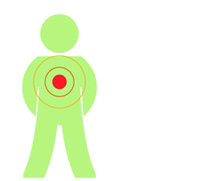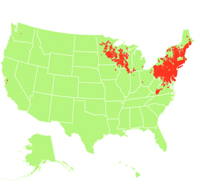Lyme Disease Research Center
Our overall goals of the Lyme and Other Tick-borne Disease Research Center are research
discovery, risk assessment, optimization of treatment and management, and public health
intervention and prevention.

~500,000
new cases each year
Close to 500,000 new cases of Lyme and other tick-borne diseases arise each year, posing a significant threat to humans and domestic animals.

95% occur
in the Northeast and upper Midwest
Ninety-five percent of the cases occur where almost one-third of the U.S. population lives – in the Northeast and upper Midwest.
Lyme disease can result in a myriad of symptoms, including fever, headache, muscle aches, fatigue, joint pain, and a circular or non-distinct rash, although sometimes a bullseye rash may appear. If left untreated, Lyme disease can lead to serious neurologic and cardiac complications.
Our Lyme and Other Tick-borne Disease Research Center brings together faculty and physicians from a broad geographic area of New York state and the Northeast, as well as facilities and databases to facilitate ecological and epidemiological studies and diagnostics, public health education and outreach, and ecology and epidemiology studies to optimize Lyme and other tick-borne disease treatment and management.
Center Directors
Yetrib Hathout, PhD
Professor/Director, Binghamton University Tick-Borne Disease Center
School of Pharmacy and Pharmaceutical Sciences
96 Corliss Ave, Johnson City, NY 13790
yhathout@binghamton.edu
Phone: 607-777-5825
Office: PB 303C.
Michel Shamoon-Pour, PhD
Co-director, Binghamton University Tick-Borne Disease Center
Binghamton University, First-year Research Immersion Program
mshamoon@binghamton.edu
Phone: 607-777-5523
Office: S3 B55/B79
Amanda Roome, PhD
Associate Director, Binghamton University Tick-Borne Disease Center
Bassett Medical Center One Atwell Road Cooperstown, NY 13326
Amanda.Roome@bassett.org
Phone: 607-547-6023